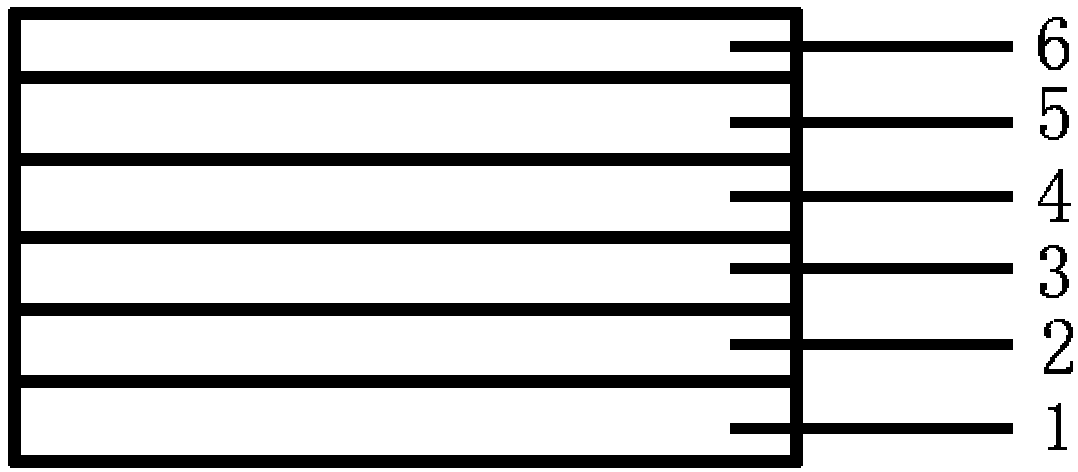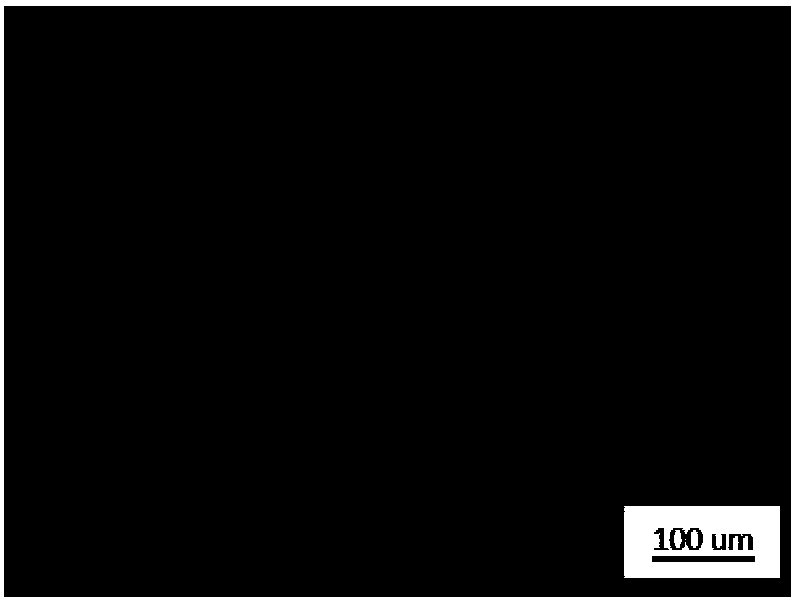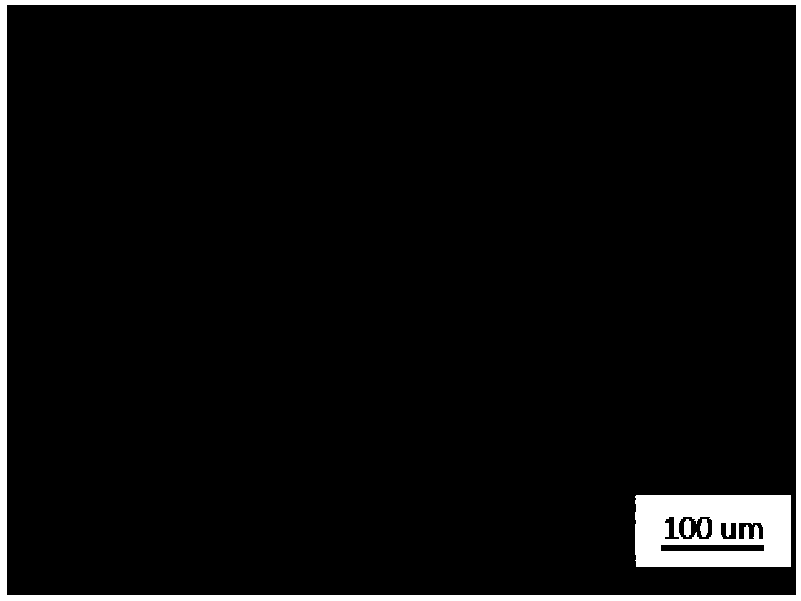Organic solar cell structure based on dimethyl acrylate monomer, and preparation method for organic solar cell structure
A dimethacrylate, solar cell technology, applied in semiconductor/solid-state device manufacturing, circuits, photovoltaic power generation, etc., can solve the problems of low filling factor, weak electron extraction ability, etc., and achieves simple process and method. Morphological instability problem, the effect of improving mechanical properties
- Summary
- Abstract
- Description
- Claims
- Application Information
AI Technical Summary
Problems solved by technology
Method used
Image
Examples
Embodiment 1
[0050] An organic solar cell structure based on dimethacrylate monomers such as figure 1 As shown, it includes transparent conductive substrate 1, ITO 2, electron transport layer 3, organic active layer 4, hole transport layer 5, and metal electrode 6 from bottom to top; organic active layer 4 includes fullerene: polymer polymerization substances, dimethacrylate monomers. A layer of ITO 2 is plated on the transparent conductive substrate 1 .
[0051] Adding dimethacrylate monomers to the organic active layer 4 solves the problem of unstable morphology of the organic active layer 4 and makes the organic active layer 4 have good thermal stability. And the mechanical properties of the morphology are improved, which provides technical assistance for flexographic printing.
[0052] It is an insoluble and infusible acrylic polymer with dimethacrylate monomer as the basic component, which is prone to polymerization reaction under the action of heat and ultraviolet rays to form a ne...
Embodiment 2
[0054] A kind of organic solar cell structure based on dimethacrylate monomer according to embodiment 1, the difference is that,
[0055] Fullerene: The polymer is P3HT:PCBM or PTB7:PCBM; the dimethacrylate monomer is (2) ethoxylated bisphenol A dimethacrylate (BPA2EODMA), (3) ethoxylated bisphenol A Dimethacrylate (BPA3EODMA), (4) Ethoxylated Bisphenol A Dimethacrylate (BPA4EODMA), (5) Ethoxylated Bisphenol A Dimethacrylate (BPA5EODMA), (6) Ethoxylated Bisphenol A A Dimethacrylate (BPA6EODMA), (10) Ethoxylated Bisphenol A Dimethacrylate (BPA10EODMA), (30) Ethoxylated Bisphenol A Dimethacrylate, 1,4-Butanediol Dimethacrylate Acrylate, 1,6-Hexanediol Dimethacrylate, 1,4-Cyclohexanedimethanol Dimethacrylate, Ethylene Glycol Dimethacrylate, Diethylene Glycol Dimethacrylate , Triethylene glycol dimethacrylate, polyethylene glycol (200) dimethacrylate, polyethylene glycol (400) dimethacrylate, polyethylene glycol (600) dimethacrylate, Polyethylene glycol (1000) dimethacrylate, po...
Embodiment 3
[0060] According to an organic solar cell structure based on dimethacrylate monomers described in Example 2, the difference is that the mass ratio of dimethacrylate monomers to the organic active layer 4 is 10 wt%.
PUM
 Login to View More
Login to View More Abstract
Description
Claims
Application Information
 Login to View More
Login to View More - R&D
- Intellectual Property
- Life Sciences
- Materials
- Tech Scout
- Unparalleled Data Quality
- Higher Quality Content
- 60% Fewer Hallucinations
Browse by: Latest US Patents, China's latest patents, Technical Efficacy Thesaurus, Application Domain, Technology Topic, Popular Technical Reports.
© 2025 PatSnap. All rights reserved.Legal|Privacy policy|Modern Slavery Act Transparency Statement|Sitemap|About US| Contact US: help@patsnap.com



